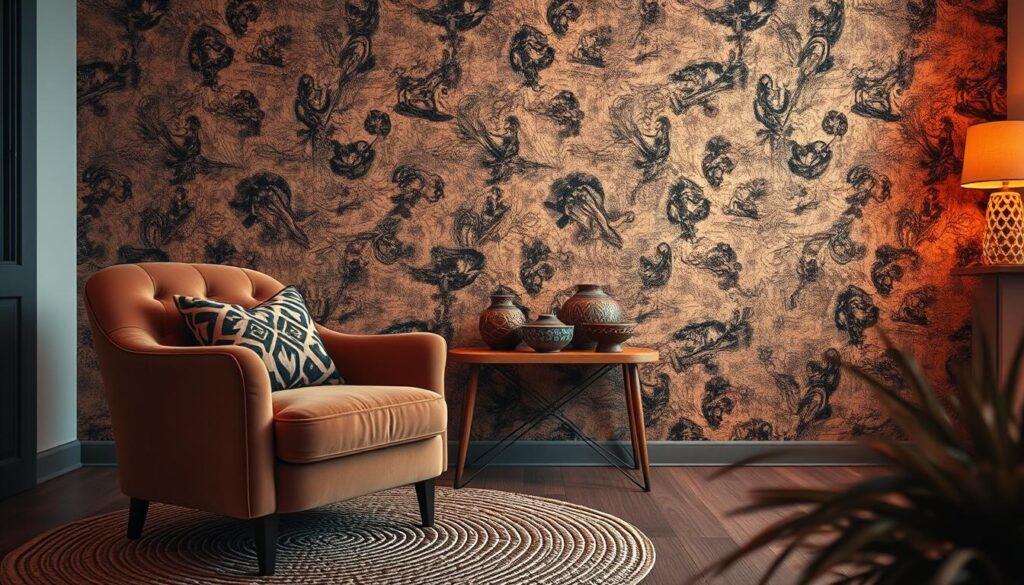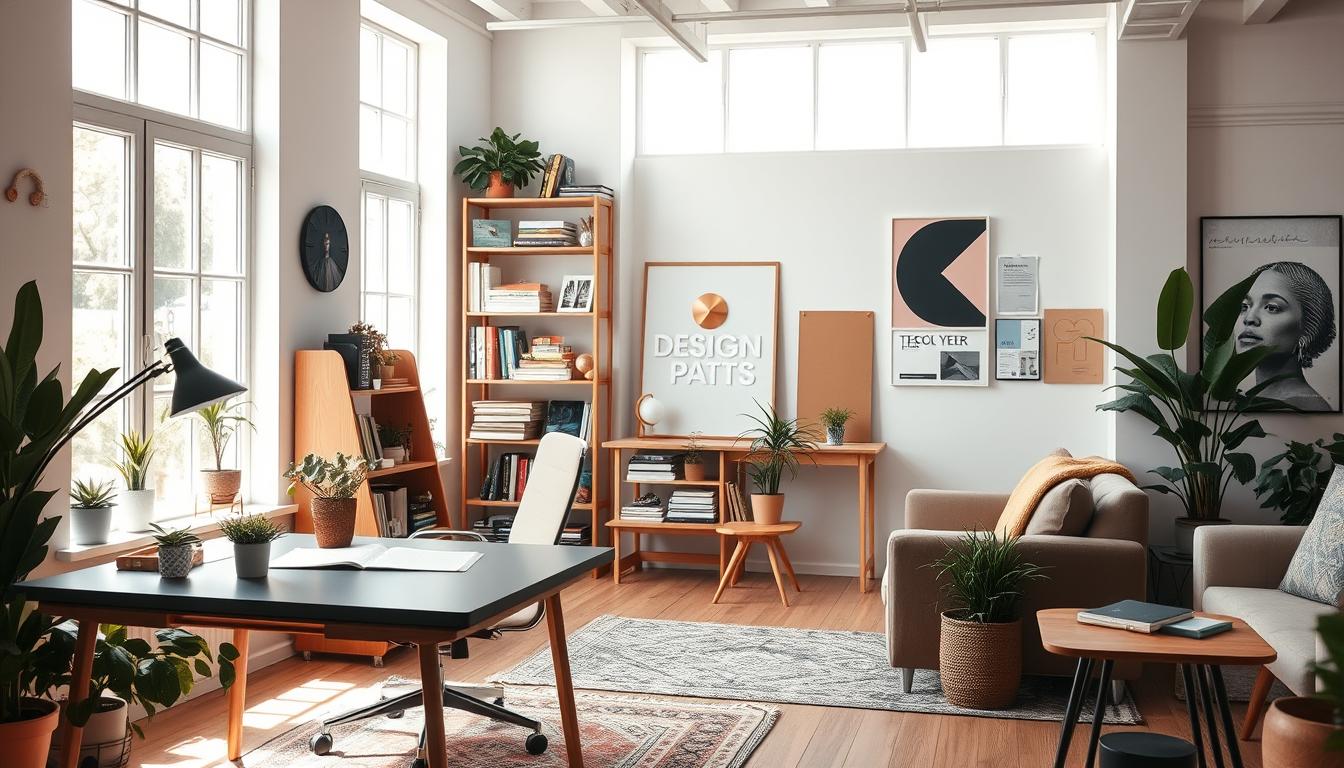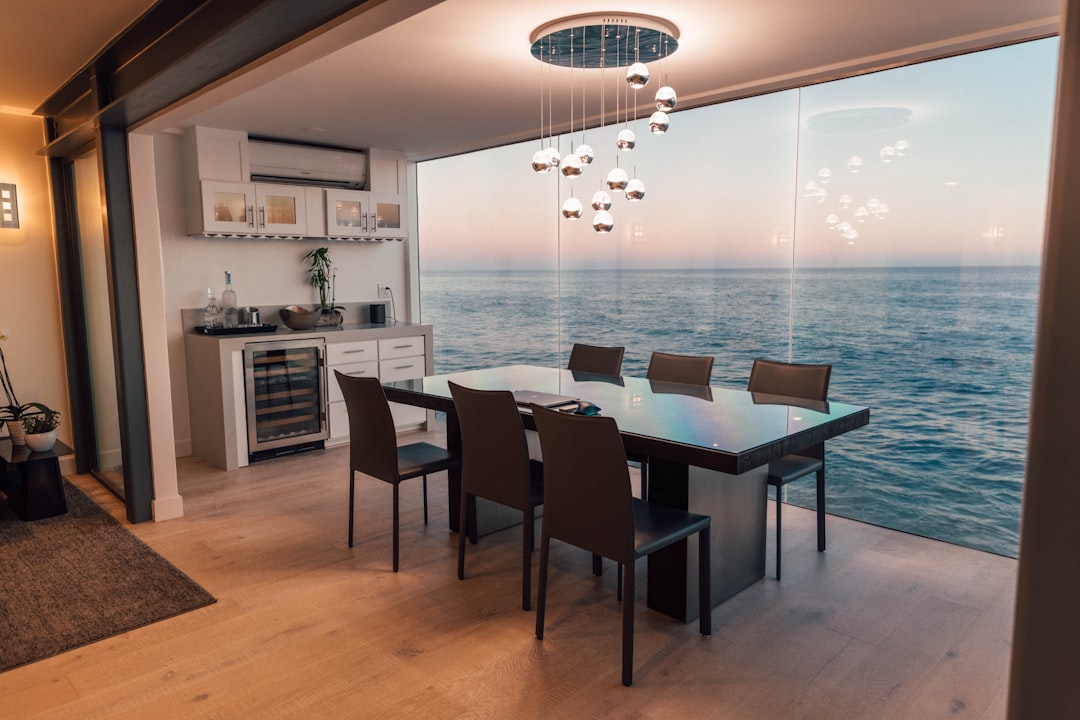Did you know a well-planned interior space can boost productivity by up to 20%? As we dive into interior design, it’s vital to know the basics for a successful career.
We’re excited to share our top tips from experienced pros. To start your journey, you must understand the basics. This includes space planning and creating a design concept that shows your personal style.
Key Takeaways
- Understand the importance of space planning in interior design.
- Develop a design concept that reflects your personal style.
- Learn the basics of color theory and texture.
- Explore different interior design styles to find your niche.
- Stay updated with the latest design trends and technologies.
Understanding the Basics of Interior Design
Starting our interior design journey is exciting. It’s not just about making a space look good. It’s also about making it functional and comfy.
To do this, we need to think about several key elements. These elements help create a space that looks and feels great.
Key Elements of Interior Design
The main elements of interior design are balance, proportion, emphasis, movement, pattern, unity, and contrast. Each one is important for a well-designed space.
- Balance is about how visual weight is spread in a space.
- Proportion is about furniture and decor sizes compared to the room and each other.
- Emphasis is about making a room’s focal point stand out.
- Movement is how our eyes move through the space.
- Pattern is using repeating designs or motifs.
- Unity is about making the space feel connected.
- Contrast is using different visual elements to add interest.
| Element | Description | Example |
|---|---|---|
| Balance | Distribution of visual weight | Symmetrical furniture arrangement |
| Proportion | Size relation between furniture and room | Oversized sofa in a small room |
| Emphasis | Creating a focal point | A statement piece of art |
The Importance of Space Planning
Space planning is key in interior design. It’s about using the space well. We need to think about the room’s purpose, the activities there, and how people move.
Good space planning can make a room feel bigger, more useful, and cozy. It’s about creating a layout that’s both pretty and practical.
Exploring Different Design Styles
Interior design isn’t one-size-fits-all. There are many styles, each with its own look and feel. From modern to traditional, the choice depends on what you like, your lifestyle, and the building’s style.
Knowing about different styles helps in making design choices. Many spaces mix styles to create something unique.
If you want to learn more about interior design, look into courses or programs at top design schools or design degree programs. Advice from best interior designers can also be very helpful.
Tools and Software for Design Projects
In interior design, the right tools and software are key to bringing our ideas to life. Having the right tech can greatly impact our projects’ success.
Choosing the best tools and software can be tough. Knowing what each popular interior design software offers helps us make better choices.
Popular Interior Design Software
Many software options are popular among designers and architects. Autodesk Homestyler, Floorplanner, and Planner 5D are among them. They let us create detailed 2D and 3D designs, making the design process more engaging.
Autodesk Homestyler has a user-friendly interface and a huge library of items. This lets us try out different layouts and styles easily. Floorplanner and Planner 5D also offer great features for complex designs and 3D visualizations.
Essential Tools for Beginners
For beginners, starting with the basics is crucial. Graph paper, pencils, and measuring tapes are essential. Software like SketchUp and RoomSketcher are also great for creating floor plans and 3D models.
These tools help beginners improve their spatial skills. This foundation is important for more complex projects.
Apps to Enhance Your Creativity
There are also apps that can boost our creativity and make the design process smoother. Apps like Houzz and Decor8 offer endless design inspiration. Tools like Color Hunt help us find perfect color schemes.
Using these apps can make our design projects more creative and efficient. This leads to better results in our work.
Developing a Design Concept
The design concept is where creativity meets strategy. It’s a key step for any project, whether it’s a home or a business. This step is crucial for success.
We start by understanding what the client wants and needs. This means researching and gathering inspiration from many places. We look at design magazines, social media, and nature. This helps us find patterns and themes that fit our design.
Researching and Gathering Inspiration
Research is essential in design. We find inspiration from many sources, like:
- Design blogs and magazines
- Social media platforms like Instagram and Pinterest
- Nature and its colors and textures
- Travel and cultural influences
Jonathan Adler said, “Design is about creating a space that’s beautiful, functional, and livable.” This quote shows what we aim to do as designers.
“The goal of design is to create an environment that is both aesthetically pleasing and functional.”
Creating Mood Boards
After finding inspiration, we make mood boards. A mood board shows our design idea with images, colors, textures, and more. It sets the mood or atmosphere we want.
To make a good mood board, we should:
- Pick images that match our design idea
- Choose colors that match the mood we want
- Add textures and patterns for depth and interest
The Role of Color Schemes
Color schemes are very important in design. They affect the look and feel of a space. By using color theory, we can pick colors that work well together. This creates a cohesive look that shows our design idea.
| Color Scheme | Description | Example |
|---|---|---|
| Monochromatic | Using different shades of the same color | Various shades of blue |
| Complementary | Pairing colors that are opposite each other on the color wheel | Blue and orange |
| Analogous | Using colors that are next to each other on the color wheel | Blue, green, and yellow |
By choosing our color scheme carefully, we can make a space that looks good and works well.
Importance of Furniture Arrangement
Furniture arrangement is more than just placing pieces in a room. It’s about creating a harmonious and functional environment. This is a key aspect of interior design. The way furniture is arranged can significantly affect the overall feel and usability of a space.
When arranging furniture, we must consider several factors. We need to think about the room’s purpose, the flow of traffic, and how to create a visually appealing layout. By doing so, we can create a space that is both beautiful and functional.
Principles of Furniture Layout
A well-designed furniture layout is based on several key principles. These include balance, proportion, emphasis, movement, pattern, unity, and contrast. By applying these principles, we can create a layout that is aesthetically pleasing and functional.
- Balance: Ensuring that the visual weight of furniture is evenly distributed.
- Proportion: Choosing furniture that is in scale with the room and other pieces.
- Emphasis: Creating a focal point in the room.
Traffic Flow Considerations
Traffic flow is a critical aspect of furniture arrangement. We need to ensure that there is a clear path through the room. Furniture should be arranged in a way that does not obstruct movement. This is important in high-traffic areas.
To achieve good traffic flow, consider the following:
- Leave enough space between furniture pieces for comfortable passage.
- Avoid blocking doorways or narrow pathways.
- Create a clear route through the room.
Choosing the Right Scale
Choosing furniture that is the right scale for the room is crucial. Oversized furniture can make a room feel cramped. Undersized furniture can make it feel empty. We need to measure the room and furniture carefully to ensure a good fit.
| Room Size | Furniture Size | Recommended Scale |
|---|---|---|
| Small (less than 100 sq. ft.) | Compact (less than 30 inches wide) | 1:1 to 1:2 (furniture:room) |
| Medium (100-200 sq. ft.) | Standard (30-60 inches wide) | 1:2 to 1:3 |
| Large (more than 200 sq. ft.) | Large (more than 60 inches wide) | 1:3 or larger |
By considering these factors and applying the principles of good furniture arrangement, we can create spaces that are both functional and beautiful. This is a goal that interior design masters and best interior designers strive for.
Lighting Strategies for Every Space
The right lighting can change a room’s feel and use. It’s key in interior design, affecting a space’s look. Knowing the different lights and how to mix them helps us make a space better.
Types of Lighting to Consider
When planning lighting, consider these types:
- Natural Light: Using natural light makes spaces feel bigger and warmer. Sheer curtains, mirrors, and shiny surfaces help.
- Task Lighting: This light is for specific tasks, like reading lamps or kitchen under-cabinet lights.
- Ambient Lighting: It lights up a room, making it cozy. Use ceiling lights, table lamps, or floor lamps for this.
- Accent Lighting: This highlights special features or areas, like artwork or details.
Layering Light for Effect
Layering different lights makes a space interesting and useful. Mixing natural, task, ambient, and accent lights creates a layered look. For example, in a living room, use table lamps for tasks, a floor lamp for ambiance, and spotlights for accents.
Students at top design schools learn about layering light in design degree programs. This skill is key for spaces that look good and work well.
Using Light to Create Ambiance
Lighting can change a space’s mood. Bright lights make a room lively, while soft lights are cozy. Adjusting the light changes the room’s feel for different times or activities.
When setting ambiance with light, think about:
- The light’s color: Warm light is cozy, cool light is energizing.
- The light’s intensity: Dimmers let you adjust brightness.
- The light’s direction: Directing light highlights features or creates shadows.
By choosing the right lights, layering them, and setting ambiance, we can make a space better for both looks and use.
Using Textures and Patterns
Learning to mix textures and patterns is key for a balanced design. It adds depth and interest to any room. This makes the space more engaging and sophisticated.

Mixing Patterns Effectively
Mixing patterns can seem daunting, but it’s easier than you think. Start with a main pattern that sets the room’s tone. Then, pick one or two secondary patterns that complement the main one without overwhelming it.
- Choose patterns that share a common color or texture to create cohesion.
- Vary the scale of the patterns to add visual interest.
- Balance bold patterns with neutral or solid-colored elements to prevent overwhelming the space.
For more inspiration on stylish home interior design ideas, visit Cozy Nest Plans. They offer a wealth of information on creating beautiful and functional living spaces.
Incorporating Textures in Design
Different textures add depth and interest to a room. Textures can range from smooth glass and metal to rough wood and stone. Mixing textures creates a rich, layered look that invites interaction.
- Start with a base texture, such as a neutral-colored sofa or rug.
- Add contrasting textures through throw pillows, blankets, or decorative accessories.
- Consider the tactile qualities of each texture and how they contribute to the overall ambiance of the room.
Balancing Bold and Subtle Elements
Balancing bold and subtle elements is crucial for a harmonious space. Bold elements, like bright colors or striking patterns, add energy and personality. Subtle elements provide a calming counterbalance.
Tips for Balancing Bold and Subtle Elements:
- Use bold elements sparingly to create focal points.
- Balance bold patterns with solid colors or subtle textures.
- Consider the 60-30-10 rule: 60% of the room should be a dominant color or texture, 30% a secondary element, and 10% an accent.
Mastering textures and patterns leads to designs that are pleasing and engaging. Whether you’re in interior decorating courses or exploring your creativity, these principles help you achieve your goals.
Sustainable Design Practices
In today’s world, using sustainable design is key for residential interior design and the interior design career path. It’s crucial to see how sustainability helps make spaces healthier.
Eco-Friendly Materials
First, we need to know about eco-friendly materials. These materials are chosen and used to harm the environment less. Examples are reclaimed wood, bamboo, and paints with low-VOCs. Using these materials helps the planet and makes spaces healthier.
When picking materials, think about their whole life cycle. Choose materials that can be recycled, reused, or are sustainably sourced. This choice is good for the planet and makes spaces look and work better.
Incorporating Sustainability into Designs
To make designs sustainable, we need a big-picture view. We must think about the environment, society, and economy. For example, using energy-saving lights and appliances cuts down on carbon emissions.
We can also make spaces last longer and adapt to changing needs. This means designing spaces that grow with their users, without needing constant updates. This saves resources and increases the space’s value.
The Impact of Design on Environment
Our designs affect the environment in many ways. From the materials we pick to how energy-efficient our designs are, every choice matters. Sustainable design can greatly lessen the harm caused by traditional design and building.
By choosing sustainable design, we help shift culture towards caring for the environment. This benefits our planet and boosts our careers in the interior design career path. As experts, we can show how sustainable design works in residential interior design and more.
Budgeting for Your Design Projects
Starting a design project means setting a budget first. This helps avoid financial worries. A good budget lets you decide how to use your resources wisely.
Setting a Realistic Budget
To set a budget, think about your project’s size, materials, and labor costs. Knowing current market prices is also key. This ensures your budget is realistic.
It’s wise to talk to top interior designers. They can share tips on saving money in commercial design.
Tips for Cost-Effective Design
Good design doesn’t have to be expensive. Here are ways to get a great look without spending too much:
- Use furniture and decor you already have.
- Look for sales or try second-hand stores for unique items.
- Choose furniture that does more than one thing to save money.
- Plan your project when prices are lower, like off-peak seasons.
When to Splurge vs. Save
Knowing when to spend more or save is crucial. Identify where quality is worth the extra cost. And where saving money won’t hurt the design.
| Area | Splurge or Save | Reason |
|---|---|---|
| Lighting | Splurge | Good lighting changes the feel and function of a space. |
| Furniture | Save | There are affordable, stylish, and durable options. |
| Materials | Splurge | Quality materials last longer and look better. |
Learning to budget well for design projects leads to beautiful, functional, and affordable spaces. Whether it’s a small home or a big commercial space, a good budget is essential.
Finalizing Your Designs
As we near the end of our interior design projects, it’s important to step back and review our work. Getting feedback from peers or mentors, like those from top design schools, can offer valuable insights. This helps us refine our designs.
Refining with Feedback
We can share our designs with others, including interior design masters, to get new views and spot areas for betterment. This feedback loop lets us make needed changes. It ensures our design meets our goals.
Preparing for the Next Steps
After finalizing our designs, we must prepare for execution. This means creating a detailed plan, including timelines and budgets, to bring our design to life.
Documenting the Process
It’s key to document our design process and results. This helps us reflect on our journey and share our experiences with others. By doing this, we can find the best practices and areas for improvement. It helps us grow as interior designers.



